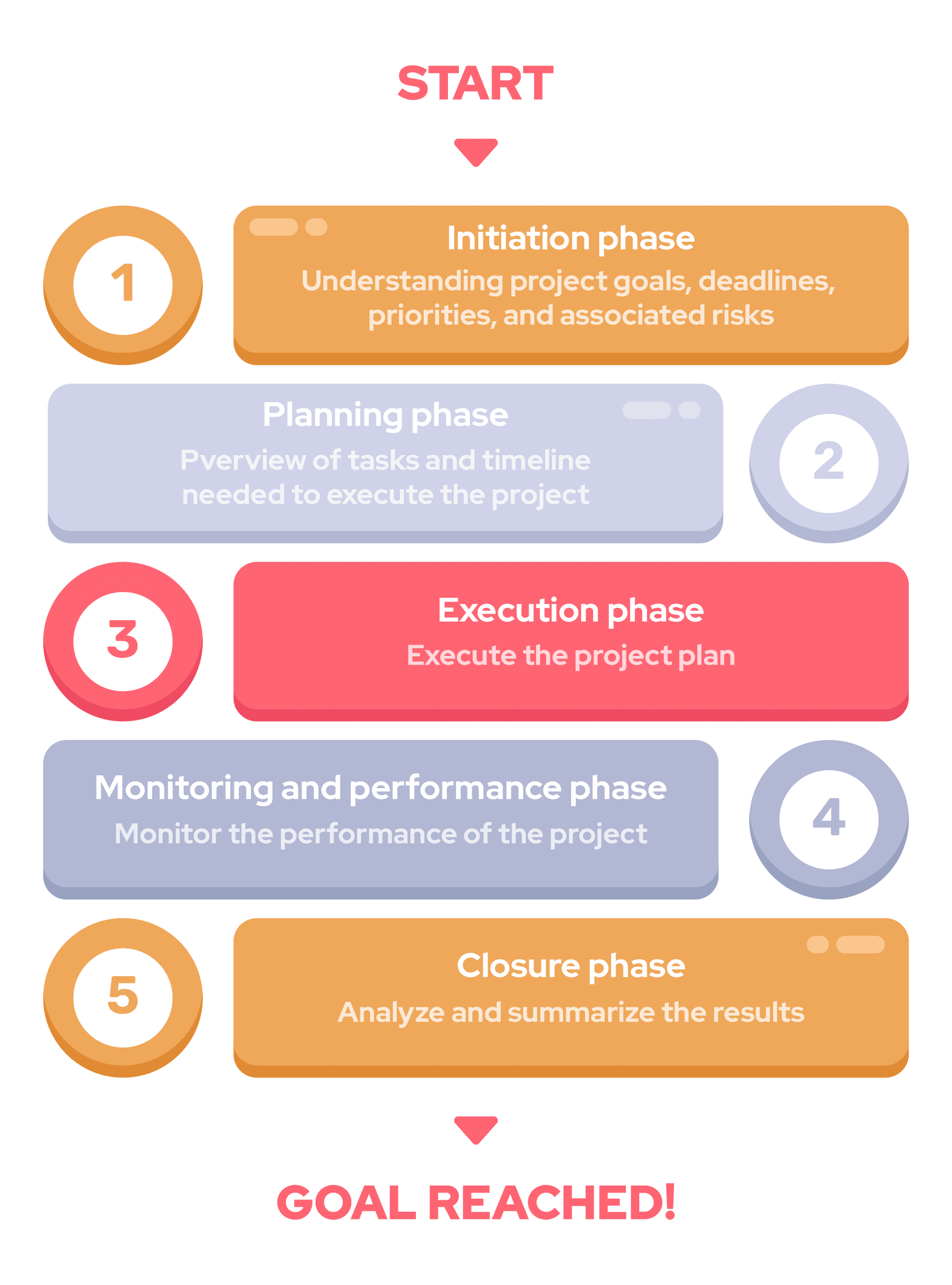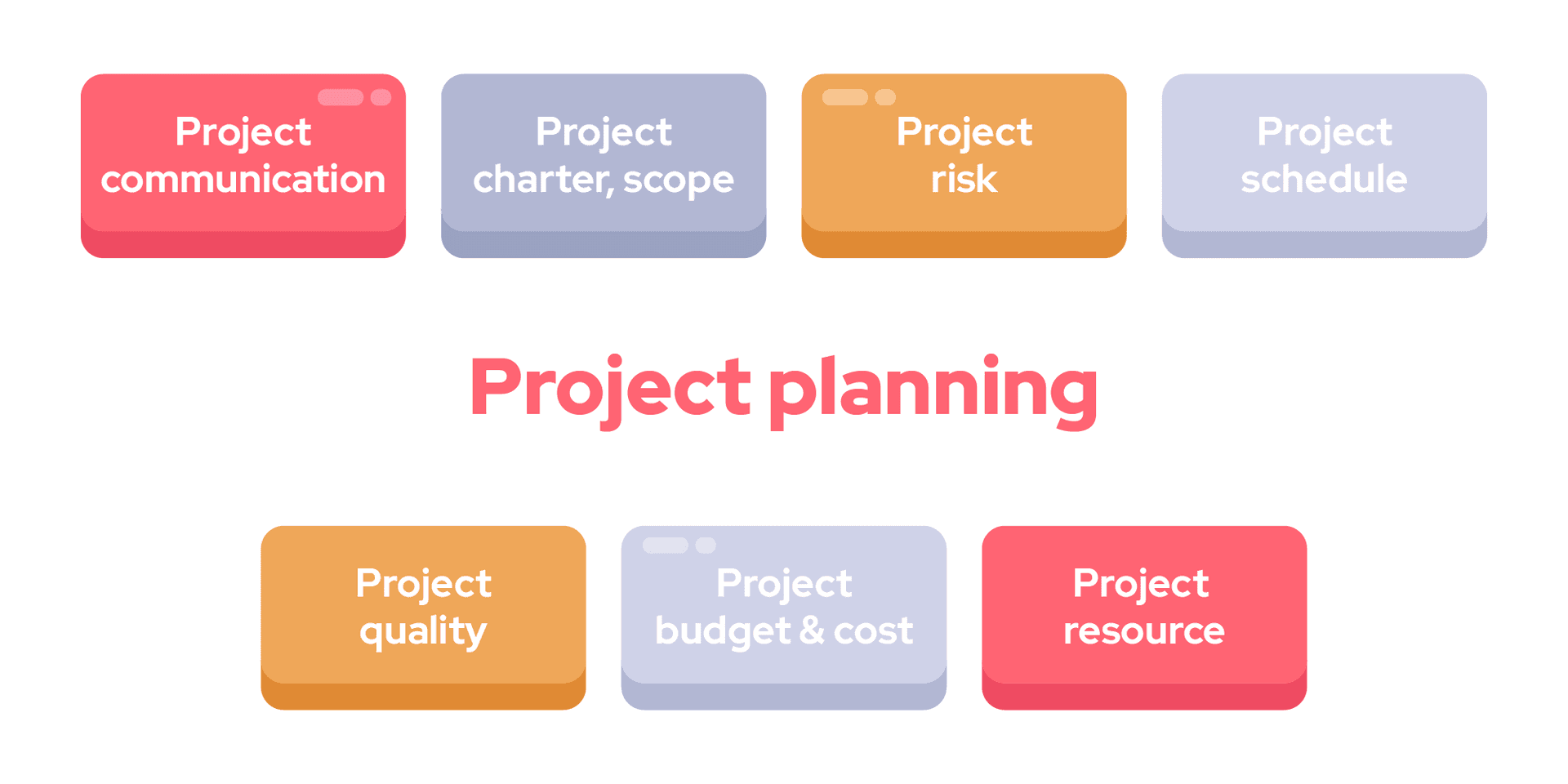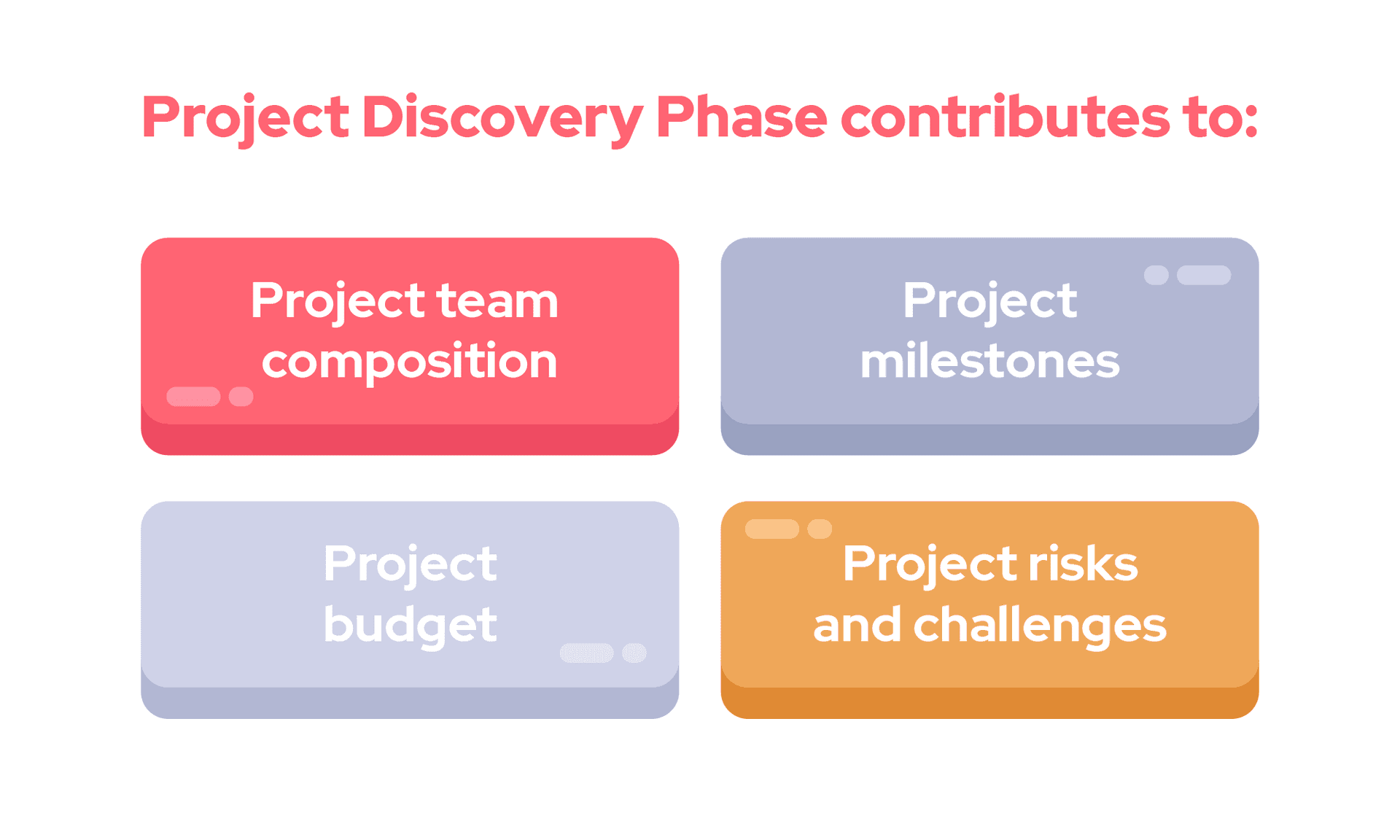The project management life cycle is the complete process of initiating, planning, executing, controlling, and closing a project. Knowing these key project lifecycle stages can help organize it and focus on your projects. Each phase of the project management life cycle has specific goals, allowing you to track each step in detail throughout the cycle. In this blog post, we will look at what the project life cycle is, explore the five phases of the project management life cycle, and why the Discovery phase is helpful for production.
During the initiation phase, it's crucial to identify the project's purpose, scope, and stakeholders, and obtain buy-in from all involved parties. The planning phase involves detailed planning and setting of project objectives, resources, timelines, and deliverables.
The execution phase requires effective communication, collaboration, and project management skills to ensure the project runs smoothly, and the desired outcomes are achieved. During the monitoring and controlling phase, the project team monitors and adjusts the project's progress and makes necessary changes to keep it on track. Finally, in the closure phase, the project is reviewed, and the outcomes are documented.
By understanding these five phases and applying them to project management, organizations can increase the likelihood of project success and mitigate risks. Effective project management not only ensures the completion of a project but also improves team morale, stakeholder satisfaction, and overall business success.
Project management phases: Brief Overview
Project production is a set of activities that must be performed in a particular order within a given period. A project requires a system of processes and talented people to get the job done. All in all, it's not an easy feat!
Any project requires a comprehensive study of its life cycle. Knowing how each phase functions provides valuable insight into how to approach it.
The standard project management life cycle consists of five phases:
-
Project Concept & Initiation
-
Project Planning
-
Project Launch or Execution
-
Project Performance & Control
-
Project Close

Usually, when a new project is started, these five phases follow each other in order, but this is not always the case. For example, if there are any changes during the course of the project, you can return to the planning phase to accommodate the changes, but do not repeat the entire cycle again from the initiation phase.
This level of flexibility simplifies change management processes throughout the project life cycle.
What is the importance of the project management life cycle? This sequence of phases may seem like a formality to you, but it actually helps a lot with the implementation of a project plan. It allows you to apply an organized approach to project management. This means that you will have more obvious roles and responsibilities, improved communication, and stable results (and there will be many fewer omissions and forgotten tasks!).
What are the different phases of a project?
The life cycle of each project includes several stages. Although there are different models of project life cycles, almost all of them include the following five phases:
Phase 1: Project Concept & Initiation
The first stage of the life cycle, initiation, requires a kickoff meeting that loops around the client and investor. Goals, objectives, doubts, fears, and any initial thoughts and ideas are discussed here. When decision-makers are not in the same place, you can look forward to organizing an online meeting for video chat or conference call to discuss the following topics for discussion:
-
Who are the investors and stakeholders?
-
What is the vision and mission of the business?
-
What are the expected timelines?
-
What are the risks?
-
What budget and resources are available?
This phase includes the description of the project, the creation of a business case, the identification of key stakeholders, and the approval of the project by the relevant parties.
Start by drafting a project charter that outlines your initial ideas as well as the project scope and constraints.
When you get busy with tasks and deadlines, it will be very easy to forget the importance of the project. In fact, only 55% of the participants clearly understand the business goals of the project, mainly team leaders and project managers.
The project charter must include specific business benefits associated with your project. This will help you and your team members not only focus on achieving goals, but also ensure that time is not wasted in advance.
Drafting a project charter will help you provide leaders with specific facts and get their approval.
Phase 2: Project Planning
During the planning phase of the project, the project manager establishes the purpose and scope of the project. In addition, project managers use this stage to determine the project budget, determine the required resources, and begin to organize a team to complete the tasks associated with the project. A feasibility analysis is testing the viability of an idea, for example, to ensure the project is legally and technically feasible as well as for economic profit.
Depending on the nature of the project, the project manager may create a report detailing the plan.

The planning phase requires careful consideration of the many elements associated with your project. Among other things, these may include the following information:
-
Key roles and responsibilities
-
Success rates
-
Possible risks and obstacles that reduce efficiency
-
Expectations for intra-team communication
-
Project Schedule
All of these elements should be described in a detailed project plan that you will present to the team at the kick-off meeting and then refer to throughout the project.
Phase 3: Project Launch or Execution
Team leaders and project managers are involved in creating results, facilitating clients, completing tasks, implementing processes, and more. Direct communication at all stages of a project is essential and vital to the successful implementation of an idea.
Important at the execution stage:
-
Frequent meetings
Keeping teams up to date with scheduled online meetings helps keep the project on track and on schedule. Timely and crystal-clear communication via video conferencing reduces blind spots, improves collaboration, and speeds up the movement of items in the pipeline.
-
Conflict Management
Problems are inevitable. Reduce the likelihood of incidents by inviting the development team to speak up and voice issues or anything that could potentially become a weak point in the chain.
-
Progress reports
Regular updates shared during a meeting session, or video chat help you stay ahead of the curve and catch issues before they happen.
Phase 4: Project Performance & Control
This phase requires a review to make sure everything is in line with what was previously agreed upon. What are the key performance indicators? What needs to be implemented in order to meet the deadlines and financial parameters?
Hold online meetings with key players for regular audits, reviews, and performance reports. You can give presentations remotely via video conferencing, including workflows, important documents and files, and anything else that needs to be shared.
During the monitoring and control phase of the project, the project manager oversees the execution of the project. They provide feedback to team members, make sure all project elements are on schedule, and remove roadblocks. By monitoring the progress of the project, managers can ensure that the scope does not increase and the project stays within acceptable time limits.
Phase 5: Project Close
After completion of all work required at the implementation stage, the project moves to the final stage. Closeout starts when the user accepts the project deliverables and the project authority concludes that the project has met the goal. During the project closure phase, the project manager communicates the completion of the project to project stakeholders. By this stage, the stakeholders have all the results. Many project managers evaluate the success of a project at this stage in order to improve the lifecycle management process for future projects. Commissioning builds trust with stakeholders and has to be integrated into all stages of the project with a project management approach to ensure that each step of testing is successful.
Decommissioning means the termination phase of a project that is carried out in an orderly manner. It requires fulfilling standards to preserve important data, information, and documentation. If required, the data retained can be easily retrieved and utilized in the future.
How the Discovery Phase contributes to efficient project management
The discovery phase helps to assess whether the company will be able to complete the client's project and how much it will cost. During the discovery phase, business problems are identified, the domain is explored, requirements are identified, and solution design is done.

Project schedule
Inception is carried out as a preparatory phase before starting work on the current project. The main goal is to detail the requirements, especially for the first iterations, so that the team does not have delays at the start. As a result of this research, you and your team should create a detailed backlog for the first few sprints of the project, at least basically decide on the architecture and approve the project schedule.
Project team composition
Project team composition includes those who can help to lead the discovery work and who can make it feasible (developer), usable (UX-person who meets the users), and sellable (PO who knows the business).
Project milestones
Discovery is a phased work. We go from global business goals and objectives to specific user actions in the system. After each stage, it provides a separate artifact with fixed requirements. Artifacts are conditionally divided into mandatory and optional, and the final set depends on the goals of the customer.
Project budget
The discovery phase allows you to determine the project timeline and budget, specify the requirements for the final product, identify the needs of the end user and get feedback from them about the product.
Project risks and challenges
In order to estimate the cost of the project and make a commercial offer to the client, it is necessary to conduct a Discovery phase or a complete analysis of all operations of the project implementation, risks, and challenges - from the emergence of an idea and business concept to the technical implementation of the expected product. This approach allows you to protect the client from unplanned costs and facilitate and clearly define the working conditions of the team that will develop the product.
FAQs
What are the objectives of each phase?
In the process of implementing a conceptual idea regarding the production process or other activities at the enterprise, several successive moments can be distinguished. So, it is customary to distinguish the following stages of the project life cycle:
-
Initiation - the idea is put forward, as well as the preparation of project documents. A detailed justification is being made, as well as marketing research, which will serve as an aid to the implementation of the subsequent stages.
-
Planning - determining the timing of the implementation of the plan, dividing these processes into specific stages, as well as appointing performers and responsible persons.
-
Execution - begins immediately after the plans have been approved. It implies the implementation in full of all planned actions.
-
Controlling or monitoring - In this phase of the life cycle, the manager controls resources, quality of work and timely completion of tasks, coordinates team members, and promptly makes changes to the project plan in case of unforeseen circumstances.
-
Completion - analysis of the received data and control for their compliance with the planned ones. In most cases, this responsibility rests with management.
What is the scope of each phase?
The costs of the project are directly dependent on its scope. Large projects require full-time workers, while relatively small projects with the same life cycle may only require part-time workers. Therefore, one person can be responsible for many projects in different life cycle phases. The management of the enterprise is responsible for periodic review of the most important stages of the project, which should occur at least at the end of each phase of the life cycle or after critical technological stages of the project.
What are the deliverables of each phase?
The project deliverables include defining the product or services that are needed. The planning phase helps to set the budget and deliver project deliverables without exceeding it. In the Project Execution phase, the team will start creating project deliverables and achieve project goals and objectives as outlined in the project plan. In the Project Closure phase, the product is delivered to clients, the project manager will highlight strengths, list the takeaways of the project, and identify the unclearness.
What is the timeline for each phase?
Regardless of which methodology is chosen for project management, each of them will always have a beginning, a middle, and an end. This is the life cycle of a project.
Project management can seem overwhelming at times. However, dividing a project into five distinct phases, called the project life cycle, will help the team manage time and resources wisely, which increases the chances of success for projects of any size or complexity.